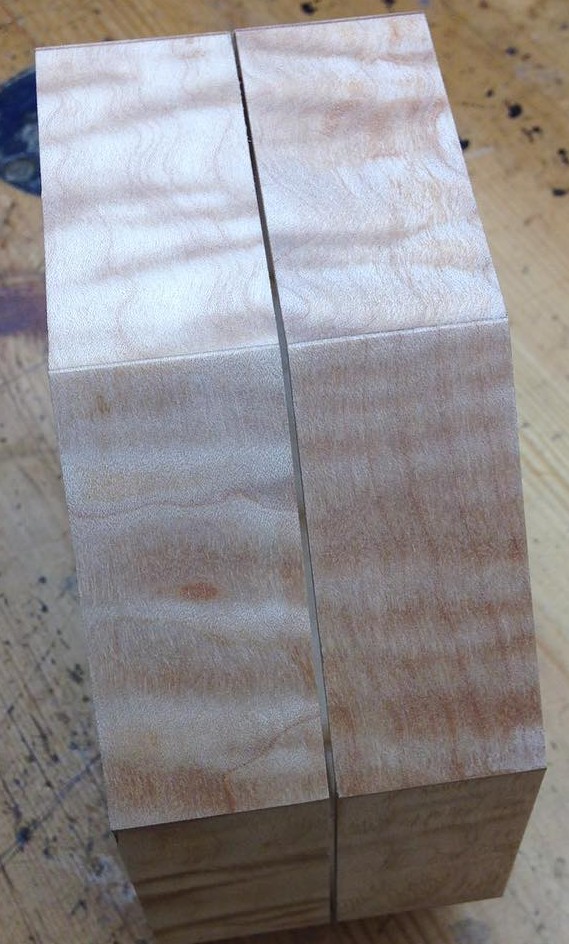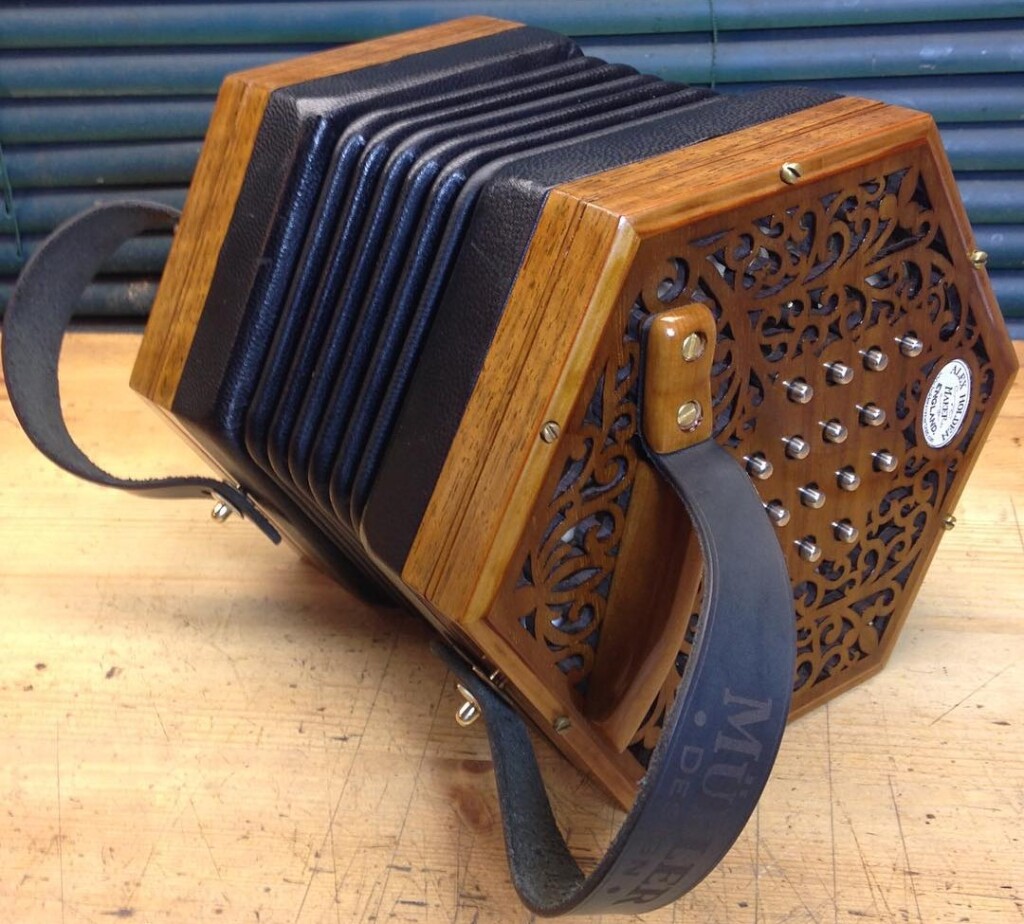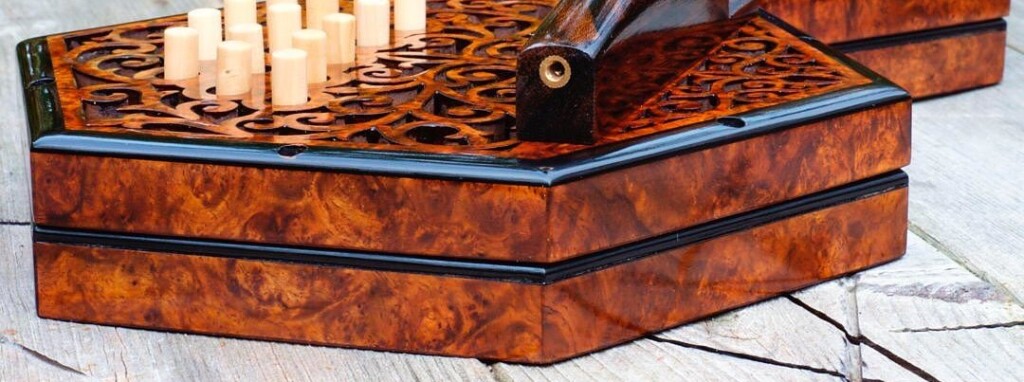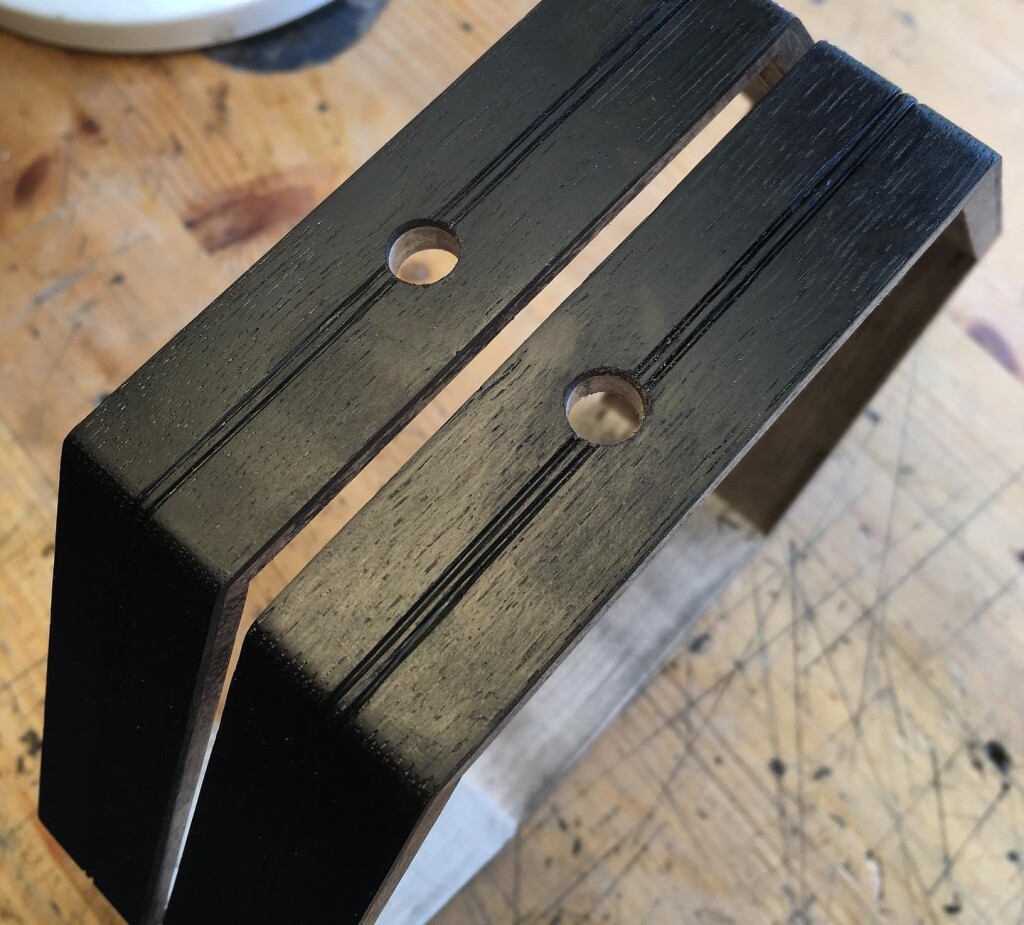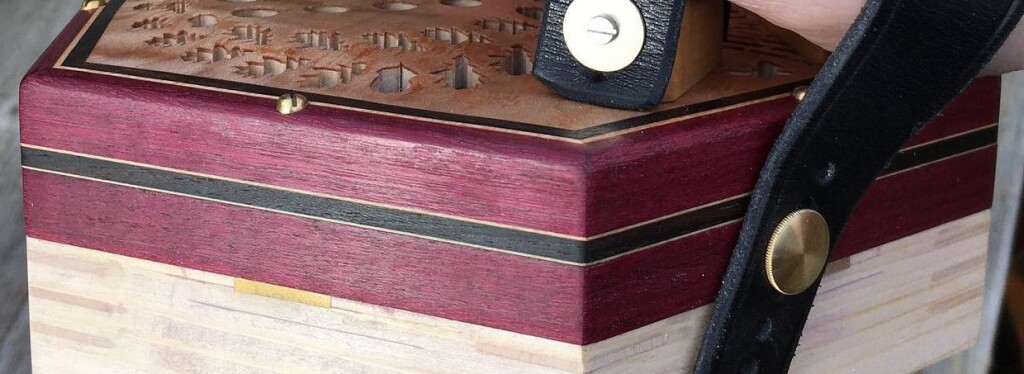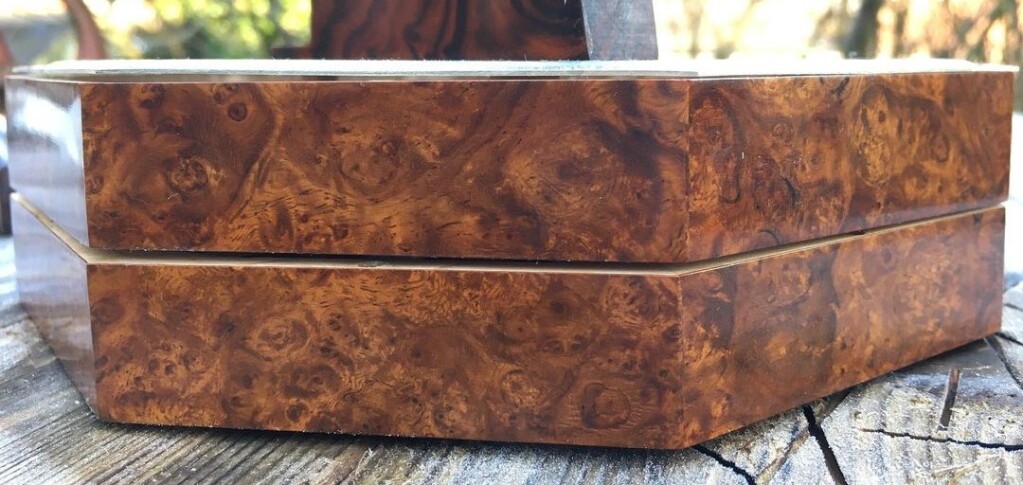The walls of the action boxes are usually made from solid sycamore with a decorative veneer glued on the outside, often the same veneer as the end plates, e.g. No. 3 has a rippled sycamore veneer on both end plates and action box sides:
It is also possible to make the action box walls from solid wood, like the solid black walnut sides on No. 2.5:
It is possible to incorporate strips of different-coloured woods into the action box sides, e.g. the decorative Ebano strip at the seam between the top and bottom halves of the action boxes on No. 8:
Modern commercially-sold veneers are planed off a log (or burl) with a sharp blade, and as a result they are very thin: typically about 0.6mm, which can get down to 0.4mm or less once you have sanded the surface smooth. On No. 13 I got hold of some small pieces of solid bog oak wood. It is very expensive, so to make it go further I used my bandsaw and drum sander to convert some of it into 1.5mm thick veneers and glued them to the action box sides. The advantage of a thicker sawn veneer is that you can get away with cutting deeper decorative grooves in it and you can round over the corners to a larger radius without risk of exposing the sycamore beneath it.
No. 7 has solid purpleheart walls, a purpleheart border, and a multi-coloured strip at the seam in the action boxes, complementing the striped border around the end plates:
No. 9 has one-piece action boxes (possible on an instrument that has metal end plates with crimped borders), and we decided to not cut grooves in the walls to imitate a seam. The idea was that it would show off the pretty amboyna burl better; I think this wouldn’t have worked so well with a plain veneer:
